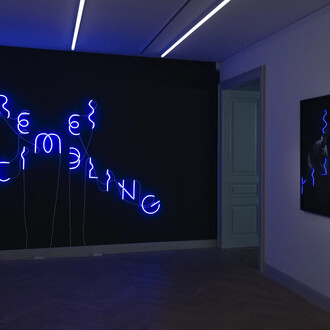MASI will host a major monographic exhibition dedicated to Wolfgang Laib, a German artist whose work in the contemporary artistic scene stands out for its essentialness, clarity, and depth of thought. The exhibition project, planned in close collaboration with the artist himself, comprises 50 works, including sculptures, photographs, drawings, and installations that explore all the areas of his creative universe.
The drawings and the photographs that open the show immediately outline Laib’s unique artistic language, capable of merging, with harmony and simplicity, a deep knowledge of culture and Eastern religions, and an equally close reflection on the roots of Western cultural heritage.
The photographs Laib has taken during his trips to Europe and Asia comprise a repertoire of forms that draw new life in his essential pastel drawings. In turn, the motifs that fill his works on paper are echoed and magnified in the sculptures and installations on display, according to a principle of circularity and repetition that is characteristic of this artist’s work.
In the ample exhibition space on level -2, works representing Laib’s entire artistic trajectory converse without barriers in the exhibition space: from his essential Milkstone, which perfectly and in a balanced manner combines the hardness of marble and the fluidity of milk, present since the artist’s early shows, to his more recent wooden structures covered with reflecting Burmese lacquer (Untitled, 2003); from the famous sequence of the Rice Meals (1983) to the imposing ziggurat (Es gibt keine Anfang und kein Ende, 1999) made of wood and beeswax that impresses the viewer for its sheer size and intense fragrance. At the heart of the exhibition is the large and luminous field of pine pollen, a presence as ephemeral as it is grandiose, which inevitably invites us to contemplate the cycles of nature and life.
Laib’s attitude in dealing with the organic and inorganic materials that make his works unmistakable is significant: he sculpts marble, shapes beeswax, and arranges pollen in orderly compositions without presuming to attach new value to the materials. Rather, he seeks to act as a go-between who, through his work, makes visible the intrinsic beauty of every material.
Wolfgang Laib was born in Metzingen in 1950 and grew up in a cultured, open-minded family environment. In the 1960s, the family began taking many trips to Asia. Laib visited museums, monuments, archaeological and pilgrimage sites, coming into contact with cultures and lifestyles that were diametrically opposed to Western ones. In 1968, notwithstanding his profound interest in art, he began studying medicine. From 1970 onwards, the Laib family began spending their summers in southern India, where the head of the family founded a project to sustain development. Wolfgang Laib was greatly influenced by his contact with the local lifestyle. In 1972, the artist made his first sculpture, a Brahmanda (in Sanskrit “cosmic egg”), and from that moment on he devoted himself entirely to artistic creation. Over the course of his career Laib has exhibited his work in major European and American museums, and has participated in many editions of Documenta and the Venice Biennale. In 2015 he received the Praemium Imperiale for sculpture. Laib currently lives and works in a small village in southern Germany, and for a few months every year in a housecum- studio in southern India.












